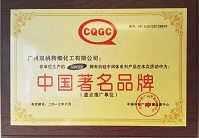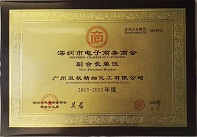
![]() E-mail: admin@gz-chemical.com
E-mail: admin@gz-chemical.com
Email us,best price and silane solutions for you!
Tel:+86 (20) 29035969

![]() E-mail: admin@gz-chemical.com
E-mail: admin@gz-chemical.com
Email us,best price and silane solutions for you!
Tel:+86 (20) 29035969


If you drop an aluminum spoon in a sink full of water, the spoon will sink to the bottom. That's
because aluminum, in its conventional form, is denser than water says Utah State University
chemist Alexander Boldyrev.
But if you restructure the common household metal at the molecular level, as Boldyrev and co
lleagues did using computational modeling, you could produce an ultra-light crystalline form of
aluminum that's lighter than water. Boldyrev, along with scientists Iliya Getmanskii, Vitaliy Koval
, Rusian Minyaev and Vladimir Minkin of Southern Federal University in Rostov-on Don, Russi
a, published findings in the Sept. 18, 2017, online edition of The Journal of Physical Chemistry
C.
The team's research is supported by the National Science Foundation and the Russian Ministr
y of Science and Education.
"My colleagues' approach to this challenge was very innovative," says Boldyrev, professor in U
SU's Department of Chemistry and Biochemistry. "They started with a known crystal lattice, in t
his case, a diamond, and substituted every carbon atom with an aluminum tetrahedron.
The team's calculations confirmed such a structure is a new, metastable, lightweight form of cr
ystal aluminum. And to their amazement, it has a density of only 0.61 gram per cubic centimet
er, in contrast to convention aluminum's density of 2.7 grams per cubic centimeter.
"That means the new crystallized form will float on water, which has a density of one gram per
cubic centimeter," Boldyrev says.
Such a property opens a whole new realm of possible applications for the non-magnetic, corro
sive-resistant, abundant, relatively inexpensive and easy-to-produce metal.
"Spaceflight, medicine, wiring and more lightweight, more fuel-efficient automotive parts are so
me applications that come to mind," Boldyrev says. "Of course, it's very early to speculate abo
ut how this material could be used. There are many unknowns. For one thing, we don't know a
nything about its strength."
Still, he says, the breakthrough discovery marks a novel way of approaching material design.
"An amazing aspect of this research is the approach: using a known structure to design a new
material," Boldyrev says. "This approach paves the way for future discoveries."
Guangzhou Double Peach Fine Chemical Co.,Ltd
Address: No 3401 Huangpu East Road, Huangpu District, Guangzhou, China
Tel:+86 (20) 29035969 Fax:+86(20)29035979
Tel/Wechat/Whatsapp:0086 13826126978 admin@gz-chemical.com